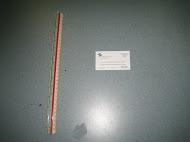Heart attacks in children
Heart attacks are not very common in children but during the times that they do, they are very dangerous with high fatality rates. Generally speaking, heart attacks are more common in adults because of the numerous risk factors that revolve around lifestyle choices. In children, cardiac arrest is usually because of a respiratory problem rather than a pre-existing cardiac condition. When children – especially infants and toddlers – experience respiratory failure, they experience a cascade of symptoms that end in cardiac arrest. Learn more about the symptoms at Pediatric Advanced Life Support Courses.
Another common cause of heart attacks in children is a the anomalous left coronary artery (ALCAPA). This is a congenital anomaly where the LCA originates from the base of the pulmonary artery instead of the aorta. Because of this, unoxygenated blood is delivered to the heart, causing the heart muscle to lose function – ending in cardiac arrest. Other similar congenital anomalies are typical in children, with symptoms become more and more observable or frequent as the child’s activity increases during toddlerhood.
Cardiac disease statistics
Cardiac disease is a pressing issue all over the world because it is the leading cause of mortality in every country, killing around 600,000 people in America alone in a year. Each year, the number of people who get heart attacks increase, averaging to about 400,000 annually. Heart disease and its management costs the health care system billions of dollars each year – a scary number for something that is preventable with lifestyle changes.
Becoming trained

There are a number of providers that offer CPR training in the US; with us, you have a choice of six provider locations over six cities. We offer the same training programs categorized under basic and advanced life support. You can enroll in the following programs:
Basic Life Support training
- Heartsaver CPR – This is the only program we have available for the general public. It teaches basic CPR and AED to students, focusing on the signs and symptoms of a heart attack and the immediate actions taken as a bystander (single person rescue). It runs for 4 hours.
- Heartsaver CPR C – This program has the same topics as the program for the general public but is more advanced, because it is targeted towards HCPs. It runs slightly longer, for 4.5 hours.
- Basic Life Support for HCPs – This programs teaches the same basics in compression, ventilation, and defibrillation but focuses both one and two person rescue. It also introduces the students to the guidelines in Basic Life Support. It is 4.5 hours long as well.
Advanced Life Support training
Before you can enroll in an advanced course, you need to have a valid training certificate in Basic Life Support for HCPs (or an equivalent) and pass the pre-test. Both courses cover the same topics in medication, medication administration, diagnostics, and whatnot, but each course covers a particular age group.
- Advanced Cardiac Life Support (ACLS) – This program is 16 hours long and teaches the management of adult cardiac arrest.
- Pediatric Advanced Life Support (PALS) – This program is 14 hours long and teaches the management of cardiac arrest in children.
